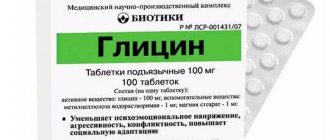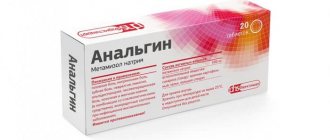The effect of antibiotics on the baby's body
Antibiotics prescribed during lactation should be as safe as possible. It is not allowed to buy goods from unverified manufacturers or accept products that are nearing their expiration date. It cannot be said that only high-quality medical drugs are sold in our country; sometimes there are counterfeits. To protect yourself and avoid health problems for your baby, you should carefully select medications.
You must carefully study the instructions, especially the points about:
- Possibility of taking during pregnancy and breastfeeding;
- level of drug toxicity;
- drug interactions with groups of drugs;
- observed side effects and how often they occur;
- the level of content of active components after intake in milk;
- there are risks of personal intolerance to the ingredients;
- impact on infant growth;
- risks associated with allergies;
- average duration of removal from the body completely;
- within what time frame can natural feeding be restored according to the standard scheme;
- maximum time for taking medications.
A drug's safety does not mean it will be effective. For this purpose, a medical examination is necessary - only a specialist will prescribe the optimal dosage.
Effect of drugs on a child
As you know, the vast majority of medications are absorbed into the blood, which means they pass into breast milk. Therefore, antibiotics taken by the mother will partially reach the baby. However, there are so-called breastfeeding-compatible antibiotics.
How safe a drug is for a baby is judged primarily on the basis of research. But it is not humane to conduct experiments on pregnant and lactating women, so there are not many drugs with a rich evidence base of safety for the fetus and baby, confirmed by clinical studies. Nevertheless, medicine knows several groups of antibacterial agents that are relatively harmless to breastfeeding infants.
In addition, when choosing an antibiotic that you can take while breastfeeding, you need to consider the following factors:
Prohibited antibiotics
Some antibiotics should not be taken during lactation. They are excreted in breast milk and can cause significant harm to the baby. The amount of substance in milk is insignificant, but no matter how much it is, it’s not worth the risk. If there is no alternative to their prescription, treatment with other means does not bring results, feeding is stopped for a while to minimize the negative consequences. Here is a list of the main groups that are not allowed during breastfeeding:
- Aminoglycosides
- Tetracyclines
- Fluoroquinolones
- Lincomycin
- Clindomycin
- Sulfonamides.
Aminoglycosides can cause hearing impairment and damage children's kidneys. Tetracyclines and fluoroquinolones also cause undesirable consequences; they negatively affect the development of the skeleton and joints of infants and are contraindicated in children under 16-17 years of age. Clindomycin can cause a serious disease - pseudomembranous colitis, and when taking lincomycin, dysbacteriosis can begin, which is difficult to correct. Breastfeeding and taking these antibiotics are incompatible, so it is stopped for a while.
- toxicity of the composition of the product;
- the specific effects of the drug on the internal organs of the newborn;
- side effects and individual tolerance or intolerance by the child to the components in the composition of the drug;
- risk of allergic reactions;
- duration of medication use;
- time for removal of the medicine from the body of a nursing mother;
- compatibility with lactation.
All the necessary information is contained in the instructions for the drug, which must be studied, even if the doctor has approved the use of this drug. Before use, be sure to consult a specialist. Only he will prescribe the correct dosage and regimen that will not harm the baby and mother.
There are many medications that should not be taken while breastfeeding. Let's find out what these remedies are and what side effects they cause.
| A drug | Negative Impact |
| Tetracycline | Causes growth retardation, deteriorates the condition of bones and teeth, and disrupts the normal functioning of the liver |
| Tinidazole and Metronidazole | Causes vomiting and serious stool disorders in a newborn, can cause slow growth and the appearance of a dark yellow tint to the teeth |
| Sulfanilamide | Affects the bone marrow, causes bleeding, disrupts the functioning of the heart and blood vessels |
| Levomycin | Causes toxic brain damage to a newborn baby |
| Clindamycin | Promotes bleeding in the gastrointestinal tract; You can feed no earlier than 24 hours after taking |
Sometimes taking the listed pills is simply necessary. In this case, you must stop breastfeeding for the time being. As a rule, the course of taking such drugs is 7-10 days. At this time it is necessary to switch to artificial feeding. And in order to maintain lactation and then return to breastfeeding, you need to express milk at least 6 times a day.
And everything would be fine if we are talking about a common cold, when you can get by with herbal decoctions, infusions or medications allowed during lactation, which means they are harmless to the baby. But what to do if the disease is caused by bacteria and threatens with serious complications if antibacterial drugs are not used? First of all, you should contact a specialist who will select a safe antibiotic, guided by the following criteria:
- Drug toxicity;
- The volumes of the drug entering the child’s body: everything is calculated depending on the dosage, the concentration of chemicals in breast milk, and the baby’s appetite;
- Impact on unformed organs and systems of the child;
- The rate of excretion from the maternal and child’s body: depends on the maturity of the excretory functions of the liver and kidneys;
- Duration of treatment;
- Sensitivity of the infant to this drug;
- The likelihood of allergic reactions.
If treatment is combined with breastfeeding, it is important to choose the most convenient and safe scheme for alternating feedings and taking medications. First of all, you need to figure out after what time the concentration of the drug in the blood, and therefore in breast milk, reaches its maximum (you can find out about this from the instructions). Therefore, the feeding schedule must be drawn up so that they do not fall during periods of maximum drug content in milk.
As you know, the vast majority of medications are absorbed into the blood, which means they pass into breast milk. Therefore, antibiotics taken by the mother will partially reach the baby. However, there are so-called breastfeeding-compatible antibiotics.
How safe a drug is for a baby is judged primarily on the basis of research. But it is not humane to conduct experiments on pregnant and lactating women, so there are not many drugs with a rich evidence base of safety for the fetus and baby, confirmed by clinical studies. Nevertheless, medicine knows several groups of antibacterial agents that are relatively harmless to breastfeeding infants.
When are antibacterial drugs really needed?
First, it’s worth understanding which ailments are difficult or even impossible to cure without antibiotic therapy. Generally speaking, this includes diseases caused by bacteria, for example:
- streptococci;
- staphylococci;
- pneumococci.
This could be a sore throat, sinusitis, cystitis, pyelonephritis, mastitis and other inflammations of different locations. In addition, women in the early postpartum period may be prescribed antibiotics if inflammation of the birth canal develops.
But viral diseases, for example, influenza, do not need treatment with antibacterial drugs, because viruses are insensitive to such drugs. A cold is not at all a consequence of a bacterial attack on the body of a nursing mother. This is a result of hypothermia and can be managed without serious medications.
Medicines are prohibited
In some situations, a woman may be prescribed drugs that are prohibited during breastfeeding. So, if we are talking about serious diseases, such as septic blood poisoning or meningitis, they think first of all about the life of the mother, and not about how to maintain lactation. As a rule, the child in such cases is weaned.
MORE ABOUT: Condition of the cervix before menstruation, menstruation, what it feels like, condition
In situations of moderate severity, if it is necessary to take an antibiotic that is not compatible with breastfeeding, temporary weaning is possible. These include drugs from the following groups:
- Tetracyclines (Doxycycline, Unidox Solutab, Tetracycline) are bacteriostatics with a wide spectrum of action. There is a theory that long-term use of such drugs can inhibit the growth of bone tissue in infants, as well as change the color of tooth enamel (in medicine there is even the expression “tetracycline teeth”). Highly toxic.
- Fluoroquinolones (Ofloxacin, Norfloxacin, Levofloxacin, Ciprofloxacin). An ambiguous group of drugs. For example, Ofloxacin in the USA is considered completely compatible with breastfeeding, but in other countries it is not used in the treatment of pregnant and lactating women. Studies of Levofloxacin on young animals revealed a negative effect on the development of joints, and osteochondrosis developed. Ciprofloxacin, according to the Thomas Hale reference book, is allowed, but there have been cases in which children who took it turned their teeth green and developed pseudomembranous colitis.
- Aminoglycosides (Gentamicin, Streptomycin, Amikacin, Kanamycin). They have a toxic effect on infants' kidneys, optic nerves and hearing aids. Therefore they are strictly prohibited.
- Sulfonamides (Biseptol, Phtalazol, Streptocide). They have a toxic effect on the baby’s liver, leading to the development of kernicterus.
- Lincosamides (Clindamycin, Lincomycin). Negatively affect the functioning of the gastrointestinal tract, in particular the baby’s intestines.
During such treatment, the mother can pump in order to maintain lactation, and at the end of the course, you need to wait a little longer until the antibiotic is completely removed from the body. This can be from 2 to 7 days after taking the last tablet.

The doctor decides on the advisability of treatment with a particular drug.
Antibiotics prohibited for hepatitis B
Ideally, antibiotics and breastfeeding are difficult to reconcile. In situations where antibiotics from the approved list do not cope with the disease, the doctor decides to prescribe antibiotics prohibited during lactation.
Important! With the right approach to the problem, following all the recommendations, after completing the treatment course, the woman resumes breastfeeding.
The list of prohibited drugs includes:
Most antibiotics should not be taken while breastfeeding
- Aminoglycosides. The active components of this group of drugs appear in some quantities in milk, but even small volumes can negatively affect the hearing organs and the functioning of the kidneys. Therefore, drugs such as Amikacin, Streptomycin, Kanomycin and the like are not compatible with lactation.
- Tetracyclines. These include Tetracycline, Doxycycline. The active ingredients of these drugs have the ability to penetrate deeply into milk. The negative effect on the baby’s body is the appearance of calcium compounds, which leads to disruptions in the development of bones and tooth enamel.
- Fluoroquinolones and drugs pass into milk in large quantities and then into the baby’s body, disrupting the development of the baby’s cartilage tissue.
- Lincomycin has the ability to quickly penetrate into milk and affects the functioning of the intestines.
- Clindomycin, its penetration into the body causes pseudomembranous colitis.
- Sulfonamides affect the exchange of bilirubin in the baby’s body, such processes lead to the appearance of jaundice.
Precautionary measures
In any case, before starting to take azithromycin, nursing mothers should weigh the pros and cons with their doctor, despite the relative safety of the drug during lactation.
Particular care should be taken in the following:
- In case of hypersensitivity to any medications in a woman, especially if angioedema or anaphylactic shock has ever been recorded.
- With the simultaneous combination of several treatment agents. For example, antacids may reduce the amount of azithromycin absorbed. And heparin cannot be combined with this antibiotic at all.
- With functional changes in the liver and kidneys, including after gestosis and hepatosis of various etiologies (fatty, etc.).
Features of taking ampicillin while breastfeeding
The safest medicine for pregnant and nursing mothers is ampicillin, a synthetic penicillin used in obstetrics since the 70s of the last century. This medicine has not been found to have any negative effects on the baby’s body. The lowest percentage of negative impacts is also noted.
The most common side effect of ampicillin is considered to be the relatively negative effect of the drug’s compounds on the beneficial intestinal microflora of adults and children, which is accompanied by increased colic, stool upset, and abdominal pain.
MORE ABOUT: Cara Delevingne suffers from psoriasis photo
Ampicillin is prescribed from 1000 to 2000 mg per day for 5 to 10 days. Combine taking an antibiotic with a probiotic. Hilak Forte is suitable for nursing mothers. The baby is prescribed a probiotic when signs of gastrointestinal distress appear, as prescribed by the doctor.
Drugs allowed during lactation
Semi-synthetic macrolides are safe, frequently prescribed drugs, but they can still provoke changes in intestinal microflora and stool upset in a child. Their use is not recommended in the first month of a baby's life.

Semi-synthetic penicillins are prescribed if the benefits of its use outweigh the possible risks. In infants it can cause dysbacteriosis, the development of thrush, stool upset, and increased susceptibility to external irritants.
Cephalosporins: Cephilim, Ceftriaxine - enter mother's milk in minimal doses, which is why the drugs are classified as approved for lactation. In terms of their effect on the child’s body, they are similar to the previous group of drugs.
Monobactams can be taken by nursing mothers in moderate dosages. Antibiotics of this group practically do not pass into breast milk, which means that the baby’s body is protected from the negative effects of chemical components.
special instructions
Azithromycin, like any medicine, has its contraindications:
- Individual intolerance to the main or auxiliary components;
- Impaired liver and kidney function;
- 1st trimester of pregnancy.
Sometimes the drug provokes negative phenomena:
- diarrhea, excessive accumulation of gases in the intestines, nausea, abdominal pain, tarry stools;
- rapid heartbeat, chest pain;
- dizziness, headache, sleepiness;
- thrush, kidney inflammation;
- allergies in the form of rash, itching, nettle fever, angioedema.
Patients often complain of photosensitivity and chronic fatigue.
According to the instructions, Azithromycin is not recommended for use during breastfeeding and pregnancy.
If the dose is unreasonably exceeded, nausea, vomiting, and diarrhea occur. If you notice symptoms of an overdose, stop taking the medicine and seek medical help. Otherwise, there is a risk of dehydration and general poisoning of the child’s body.
Penicillins
This antimicrobial group is the drug of choice during breastfeeding. Penicillins are absolutely compatible with breastfeeding, despite the fact that some reference books indicate a contraindication during lactation. The penicillin series includes Ampicillin, Amoxicillin, Oxacillin, etc.
Let's consider the benefits of the group on their most famous representative, Amoxicillin:
- its half-life is less than 2 hours, which means that 2-3 hours after ingestion there will be a minimal amount of it in breast milk, and the baby can be safely fed;
- only 0.1% of the dose drunk by the mother ends up in milk;
- low toxicity, there is a large selection of drug dosages;
- has a wide spectrum of action, therefore it is effective for otitis, sore throat, pneumonia, genitourinary infections, etc.
The biggest disadvantage of penicillins is frequent allergic reactions in the form of rashes and swelling, as well as minor diarrhea.
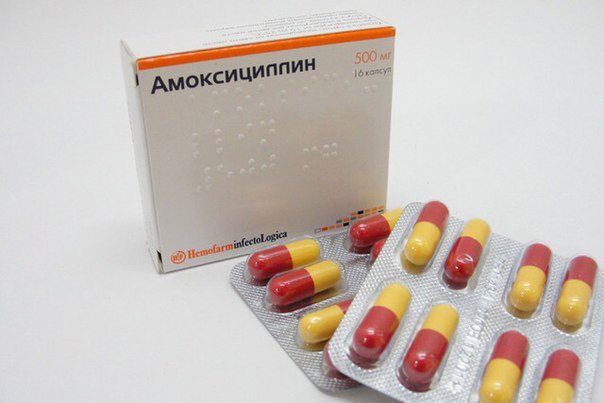
Representative of penicillins
Another negative point is related to the fact that bacteria have learned to adapt to substances of this group and even destroy them. Therefore, the issue of using so-called protected penicillins in combination with clavulanic acid is relevant. This combination is found in the drugs Amoxiclav and Augmentin.
Approved antibiotics
Nursing mother Antibacterial agents that women are allowed to use during breastfeeding include:
- penicillin group: penicillin, ampicillin, ampiox, amoxicillin;
- cephalosporins: cefoxitin, cefazolin, cephalexin;
- macrolites: azithromycin, vilprafen, sumamed, erythromycin.
It is believed that a number of these antibiotics can penetrate into the milk of a nursing mother only in small quantities, which is why they are considered safer drugs.
What antimicrobial agents can you drink during lactation? Let's consider what antibiotics can be taken during this period.
Penicillins
This antimicrobial group is the drug of choice during breastfeeding. Penicillins are absolutely compatible with breastfeeding, despite the fact that some reference books indicate a contraindication during lactation. The penicillin series includes Ampicillin, Amoxicillin, Oxacillin, etc.
Let's consider the benefits of the group on their most famous representative, Amoxicillin:
- its half-life is less than 2 hours, which means that 2-3 hours after ingestion there will be a minimal amount of it in breast milk, and the baby can be safely fed;
- only 0.1% of the dose drunk by the mother ends up in milk;
- low toxicity, there is a large selection of drug dosages;
- has a wide spectrum of action, therefore it is effective for otitis, sore throat, pneumonia, genitourinary infections, etc.
The biggest disadvantage of penicillins is frequent allergic reactions in the form of rashes and swelling, as well as minor diarrhea.
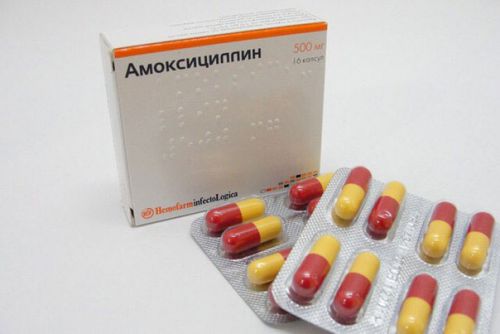
Representative of penicillins
Another negative point is related to the fact that bacteria have learned to adapt to substances of this group and even destroy them. Therefore, the issue of using so-called protected penicillins in combination with clavulanic acid is relevant. This combination is found in the drugs Amoxiclav and Augmentin.
Cephalosporins
There are 4 generations of cephalosporins:
- I generation (Cefazolin, Cephalexin);
- II generation (Cefuroxime);
- III generation (Cefotaxime, Ceftriaxone, Cefixime);
- IV generation (Cefepime).
In general, cephalosporins of all generations are approved antibiotics for breastfeeding. Let's look at some of them in more detail.

Cefazolin is fully compatible with breastfeeding and is prescribed to both adults and children from 1 month of age. The drug has a short half-life - just over 2 hours, and only 0.8% of the dose taken by the mother is found in breast milk.
Ceftriaxone is successfully used in ENT practice in the treatment of sinusitis, otitis, and pneumonia due to its wide spectrum of action. It can be prescribed according to indications even for a newborn. Ceftriaxone is excreted for quite a long time - from 12 to 17 hours, and the maximum concentration in milk is more than 4% of the dose taken by the mother. Nevertheless, it is allowed during lactation according to international reference books; no particularly negative effects on the child were found.

The cephalosporin group is often available in powders for the preparation of solutions for intramuscular or intravenous administration
Cefotaxime, despite the fact that the instructions contain warnings and even a ban on use during lactation, is compatible with breastfeeding according to international reference books. Has a short half-life (1 hour), penetration into milk is only 0.3% of the initial dose.
The entire group of cephalosporins has unpleasant side effects in the form of gastrointestinal upset, so during treatment it is necessary to monitor the baby’s stool. Since drugs are poorly absorbed from the gastrointestinal tract, most of them are produced in ampoules for injection.
Macrolides
The class of these antibiotics is not included in the group of drugs of first choice (according to the FDA scale they are classified as group C), but they are often prescribed to breastfeeding women when there is an allergy to penicillins and cephalosporins. Macrolides are bacteriostatics (drugs that inhibit the growth of bacteria, due to which their effect is weakened and nullified), but in high concentrations they act bactericidal.
Representatives: Erythromycin, Josamycin, Clarithromycin, Spiramycin, Azithromycin, Roxithromycin.
Azithromycin (analogs Sumamed, Azitrox, Azo, Azimed) is a drug with a cumulative effect, taken from 3 to 6 days, the half-life is long: from 48 to 68 hours. However, a small dose of it passes into milk, so the Hale reference book recommends it as a drug compatible with breastfeeding. After taking the antibiotic, it is recommended to refrain from breastfeeding for 3-4 hours, since at this time its concentration in milk is maximum.
It is not advisable to use macrolides in the first month after birth, since there is evidence that the drugs can affect the appearance of hypertrophic pyloric stenosis in infants. In general, this group of antimicrobial agents is considered one of the safest in terms of toxic effects.
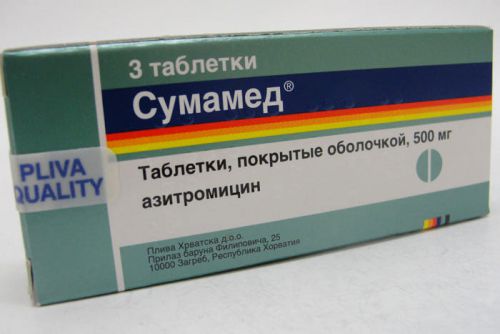
Due to the fact that azithromycin can accumulate in tissues, the course of treatment can be only 3 days
| Group of drugs | Characteristic | Drugs |
| Penicillins | Low toxicity, penetrates in small doses, but sometimes causes diarrhea and rash | Ampicillin, Amoxiclav, Ampiox, Amoxicillin and Penicillin itself |
| Aminoglycosides | Penetrate in a small dose, but sometimes negatively affect the intestinal microflora | Gentamicin and Netromycin |
| Cephalosporins | Penetrates in low concentrations, but can cause diarrhea and increase the risk of bleeding | Cefotaxime, Ceftriaxone and Cefazolin |
Drugs that belong to the Macrolides group can be taken only in extreme cases and with extreme caution. These are the drugs Sumamed, Macropen and Erythromycin. The composition of medications negatively affects the well-being of the newborn. First of all, these are allergies and dysbiosis in infants.
In fact, everything is not so hopeless, since there are antibiotics that are allowed during lactation and have minimal side effects. That is why, when contacting a doctor, you should tell him about your function as a nursing mother. This precaution is very important, because there are safe drugs and treatment regimens for the lactation period.
Indications for taking antibiotics for a nursing woman
If a bacterial infection has entered the body and is multiplying, then this is a direct signal to prescribe antibiotics. The consequences of delay can be much more serious than from taking the drug itself. A striking example of this is tonsillitis, the causative agent of which in most cases is streptococcal infection (less often staphylococcus). If treatment is not started in time, the disease is fraught with complications in the renal and cardiac systems, and the development of rheumatism.
Antibiotics during breastfeeding are prescribed without fail in the following situations:
- the patient had a difficult birth, which resulted in a rupture of the birth canal or an episiotomy (antibacterial treatment is often preventative, but it is necessary);
- infectious and inflammatory diseases of the ENT organs or lower respiratory tract (pneumonia);
- inflammation of the mammary gland (mastitis);
- diseases of the genitourinary system in the presence of pathogenic microflora (for example, pyelonephritis);
- some intestinal infections.
MORE ABOUT: Why you feel dizzy when you lean forward and backward: reasons and what to do

There are situations when you can’t do without antibiotics
If the correct diagnosis has been established and the drug has been correctly selected, the nursing woman will feel better when she starts taking it, which will speed up her recovery. And a child, especially a small one, needs a healthy mother first of all.
The first rule for a woman during lactation: always inform him at the beginning of a conversation with your doctor that you are breastfeeding. It wouldn’t hurt to mention this when standing at the counter in a pharmacy. The annotation to the medicine may contain a direct indication that this drug can be taken during breastfeeding, or there may be information like: it can be taken if the benefit outweighs the risk.
Approved antibiotics for breastfeeding
- Amoxicillin (, Flemoxin Solutab ®);
- (Ampicillin Renewal ®);
When prescribing cephalosporins, the question of temporarily stopping breastfeeding is raised. From this group of drugs, breastfeeding women are prescribed drugs:
- (Rofecin ®, Lendacin ®);
- (Cefazolin-Teva ®);
- (Klaforan ®).
If necessary, macrolides are prescribed (it is also necessary to resolve the issue of temporarily transferring the child to artificial feeding):
- Azithromycin ();
- Josaminin();
- Midecamycin();
Due to the higher risk of complications in the child (macrolides pass into breast milk in greater quantities than aminopenicillins and cephalosporins), these drugs are used less frequently.
It is important to remember that the younger the baby is, the higher the likelihood of developing allergic reactions, gastrointestinal disorders, etc. To prevent dysbiosis, the child is prescribed probiotics (Linex Baby ®).
What antibiotics can be taken for sore throat while breastfeeding?
The drugs of choice are aminopenicillins and cephalosporins.
Amoxil ®
Amoxicillin is a semi-synthetic aminopenicillin with a wide spectrum of antibacterial effects on pathogenic microflora. The activity of the drug extends to diphtheria corynebacteria, enterococci, listeria, streptococci, Helicobacter pylori, peptostreptococci, meningococci and gonococci.
The following have variable sensitivity to the drug: Escherichia coli, Haemophilus influenzae, Proteus, Moraxella, pneumococci and fusobacteria.
Amoxicillin is not effective against Staphylococcus aureus, Klebsiella, Chlamydia, Mycoplasma, Rickettsia, Citrobacter, Serracia and Enterobacter. Also, it is necessary to take into account that the antibiotic is completely destroyed by bacterial penicillinases.
The antibiotic has good digestibility and almost complete absorption. Absorption of Amoxil ® does not depend on food intake. Maximum plasma concentrations are achieved within one to two hours after taking the drug.
The antibiotic effectively accumulates in mucous membranes, bone tissue, sputum and intraocular fluid. Antimicrobial concentrations in bile exceed those in plasma.
Disposal of the drug from the body is carried out by the kidneys. Liver failure does not affect the elimination of the drug and does not require dose adjustment.
The drug is effectively used for infections of the respiratory system, gastrointestinal tract, skin and gastrointestinal tract.
The product has a wide range of dosages, so the frequency of administration and dose are selected individually, depending on the severity of the patient’s condition and the location of the inflammatory process.
As a standard, adults are prescribed 0.25 to 0.5 grams of Amoxil ® every eight hours, or 0.5 to 1 gram twice a day (the second option is preferable for breastfeeding women). The maximum daily dose is six grams.
The tablets must be washed down with chilled boiled water, without breaking or chewing. During treatment with amoxicillin, it is recommended to increase fluid intake.
Contraindications to antibiotic prescription are:
- individual intolerance to beta-lactams;
- Infectious mononucleosis;
- lymphocytic leukemia;
- history of pseudomembranous colitis.
Use with caution in renal failure.
The antibiotic can pass into breast milk in small doses, but it is low-toxic and rarely provokes the development of undesirable effects.
Ampicillin ®
This is an antibacterial drug related to aminopenicillins. It has a wide spectrum of activity, including streptococci (including pneumococcus), enterococci, meningococci, gonococci, Shigella, Escherichia coli, Salmonella, Proteus, Bordetella and some strains of hemolytic bacillus. The drug is completely inactivated by penicillinase, so it is not prescribed for the treatment of diseases caused by strains that produce beta-lactamases.
Ampicillin during lactation is used for infections:
- ENT organs and. breath systems;
- genitourinary system;
- skin and pancreas.
Also, the drug can be prescribed for septicemia and tank. endocarditis.
The antibiotic has high acid resistance and good absorption when taken orally. Significant plasma concentrations are achieved within two hours after administration. Disposal from the body is carried out mainly by the kidneys, a small part is excreted with bile.
Ampicillin during breastfeeding is contraindicated in patients with:
- individual intolerance to beta-lactams;
- infectious mononucleosis;
- severe kidney and liver dysfunction;
- leukemia.
The solution should be taken half an hour before or two hours after a meal. The duration of treatment and dose are calculated individually.
For infectious diseases of the ENT organs and respiratory tract of moderate severity, 0.25 g of antibiotic is prescribed every six hours. In severe cases, it is recommended to take 0.5-1 grams every six hours.
For urinary system infections, 0.5 grams is prescribed three times a day.
Due to the fact that Ampicillin must be taken three to four times a day, it is prescribed to nursing mothers less often than amoxicillin, which can be taken twice a day.
Are antibiotics compatible with giv
Antibiotics are medicinal substances of various origins that have bacteriostatic or bactericidal properties. There are several generations of antibacterial drugs, each of which is stronger and more effective than the previous one. Along with the strength of the antibiotic, the number of side effects and contraindications for its use increases.
Medicines for mothers often allow you to quickly get rid of not only the symptoms of the disease, but also completely recover from it. The drugs will help maintain a woman’s health.






